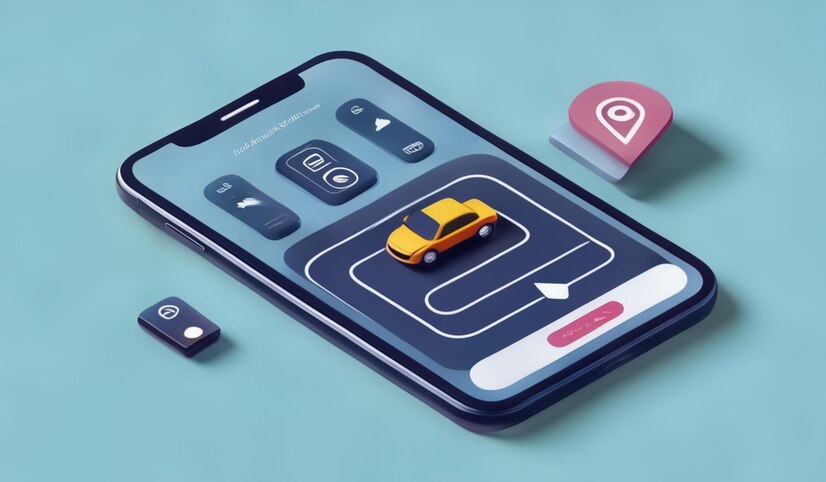Building an Uber clone app has become a popular venture for entrepreneurs aiming to tap into the lucrative ride-hailing market. However, one of the most crucial aspects of developing a successful Uber clone is understanding the associated costs. This article will break down the expected costs, the factors influencing them, and how to make cost-effective choices without compromising quality.
What is an Uber Clone App?
An Uber clone app is a ride-hailing application that mimics the functionalities of the original Uber app, enabling users to book a ride, and drivers to accept trips, track routes, and process payments. Clone apps are developed using a pre-made template, saving time and resources compared to developing a similar app from scratch. However, customization is key to differentiating your app and offering unique value to users.
Why Build an Uber Clone App?
Developing an Uber clone app is a strategic way to enter the transportation and mobility market with a proven model. With features like real-time tracking, cashless payments, and seamless user experiences, Uber clone apps have high market potential. They are especially valuable for businesses that want to offer local ride-sharing services, bike or scooter rentals, and delivery services, or even integrate with existing platforms.
Key Features of an Uber Clone App
Understanding the core features needed in your app helps clarify where costs may arise. Here are some standard functionalities:
- User Registration and Profile Management: Allows users and drivers to sign up, create profiles, and manage information.
- Geolocation and Routing: Enables real-time tracking, displaying the driver’s location and optimal route.
- Payment Integration: Includes payment methods like credit cards, wallets, or cash for a seamless transaction process.
- Push Notifications: Keeps users updated on ride status, promotions, or changes.
- Fare Calculation: Calculates ride cost based on distance, time, and base fare.
- Admin Panel: Allows the app owner to monitor activity, manage users, and set policies.
Factors Affecting the Cost of Developing an Uber Clone App
Complexity and Features
-
- The number of features and the complexity of their implementation significantly affect cost. Basic features are essential, but adding unique options like in-app chat, loyalty programs, or multi-language support increases the budget.
Platform Choice (iOS, Android, or Both)
- Developing for both Android and iOS requires more resources, increasing development costs. Many businesses opt for a single platform to test the market before expanding.
App Design and User Experience
- A user-friendly design tailored to your audience requires careful planning and testing, impacting costs. A well-designed interface improves user retention and engagement, so investing in design is often worth the cost.
Backend Infrastructure
- A robust backend handles user data, processes ride requests, manages payments, and tracks location. Depending on the complexity of your app’s operations and traffic, you may need a scalable backend, increasing the initial cost but preventing future issues.
Third-Party Integrations
- Payment gateways, GPS services, and SMS notifications are crucial for ride-hailing apps. Each integration involves additional costs based on provider fees and implementation effort.
Development Location and Team Expertise
- Development costs vary widely depending on the location of your development team. For instance, hiring developers in North America or Europe tends to be more expensive than in Asia. Team experience also impacts the rate, with highly specialized developers costing more but potentially reducing development time.
- Payment gateways, GPS services, and SMS notifications are crucial for ride-hailing apps. Each integration involves additional costs based on provider fees and implementation effort.
- A robust backend handles user data, processes ride requests, manages payments, and tracks location. Depending on the complexity of your app’s operations and traffic, you may need a scalable backend, increasing the initial cost but preventing future issues.
- A user-friendly design tailored to your audience requires careful planning and testing, impacting costs. A well-designed interface improves user retention and engagement, so investing in design is often worth the cost.
- Developing for both Android and iOS requires more resources, increasing development costs. Many businesses opt for a single platform to test the market before expanding.
- The number of features and the complexity of their implementation significantly affect cost. Basic features are essential, but adding unique options like in-app chat, loyalty programs, or multi-language support increases the budget.
Cost Breakdown: Building an Uber Clone App
Let’s break down the main stages and associated costs for developing an Uber clone app.
1. Planning and Research ($5,000 – $10,000)
This phase involves identifying your target market, defining your unique value proposition, and mapping out the app’s features. You’ll need to invest in market research, competitor analysis, and feature planning.
2. Design ($10,000 – $15,000)
The design phase includes creating wireframes, UI/UX design, and prototypes. The aim is to make the app user-friendly and visually appealing. Customization and animations add to the design cost.
3. Backend Development ($20,000 – $40,000)
The backend is the engine of your app. It manages user data, handles real-time ride requests, and powers payment processing. Backend costs are influenced by the app’s complexity and the hosting environment you choose.
4. Frontend Development (Driver and Rider Apps) ($25,000 – $50,000)
Each app needs a frontend for drivers and riders, which often means double the development work. Frontend costs depend on the number of features, platform choice, and design complexity.
5. Testing and Quality Assurance ($5,000 – $15,000)
Rigorous testing ensures that your app functions correctly across devices and platforms. It includes usability testing, performance testing, and bug fixes. Quality assurance is crucial for providing a seamless experience to users.
6. Deployment and Launch ($3,000 – $5,000)
Once testing is complete, the app must be deployed to app stores. This phase may incur fees for app store submission, which typically includes Apple’s App Store and Google Play fees.
7. Maintenance and Support ($1,000 – $5,000 per month)
Maintenance involves updating the app regularly to ensure compatibility with the latest OS versions, fixing bugs, and adding features as needed. It’s essential to budget for ongoing support.
Estimated Total Cost: $70,000 – $150,000+
Ways to Save on Uber Clone App Development Costs
-
Start with an MVP
Begin with a Minimum Viable Product (MVP) containing only core features. This allows you to test the app in the market and add additional features based on user feedback. -
Choose a Whitelabel Solution
Whitelabel solutions allow you to launch quickly with a pre-built structure, cutting down both development time and cost. -
Outsource Development
Hiring a development team in regions with lower rates, such as Eastern Europe or Asia, can reduce costs without sacrificing quality. -
Focus on One Platform First
To save on costs, develop for either iOS or Android initially, based on where most of your target audience is active.
Conclusion
Creating an Uber clone app is a viable option for entrepreneurs entering the ride-hailing industry, but costs vary widely depending on features, platform choice, and team location. By prioritizing essential features, considering whitelabel solutions, and managing costs through strategic choices, you can create a high-quality ride-sharing app without overshooting your budget.
Frequently Asked Questions (FAQs)
Q1: How long does it take to develop an Uber clone app?
Answer: The development timeline depends on the app’s complexity and features but generally ranges from 3 to 8 months, including design, development, testing, and deployment.
Q2: What are the recurring costs after launching an Uber clone app?
Answer: Recurring costs include maintenance, server hosting, app store fees, and updates. These typically range between $1,000 to $5,000 per month, depending on your app’s size and the frequency of updates.
Q3: Can I use a whitelabel solution to reduce development costs?
Answer: Yes, a whitelabel solution can help reduce both costs and development time, allowing for quicker market entry. However, customization options may be limited compared to fully custom-built apps.
Q4: What factors affect the cost of an Uber clone app the most?
Answer: The most significant cost factors are app complexity, platform choice, development team location, third-party integrations, and the number of unique features.
Q5: Is it better to develop an Uber clone app for one platform first?
Answer: Starting with one platform, usually based on your target audience’s preference (iOS or Android), is a cost-effective approach. It allows you to test the app and gather user feedback before expanding to other platforms.





